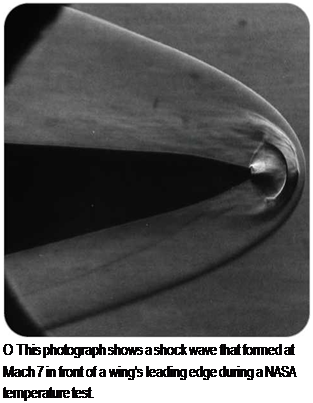Reaching the Speed of Sound
During World War II, fighter pilots sometimes found their planes behaving oddly in a high-speed dive. The plane shook violently, and the controls seemed to become locked and ineffective. Some pilots were able to regain control. Others
were not so lucky, and they crashed. Some aircraft were shaken so violently that they broke up. There were more mysterious crashes when early jet planes were being tested at high speed. This gave rise to the idea of the sound barrier-an invisible wall that an aircraft had to break through.
The first plane to fly faster than sound in level flight was the Bell X-1 experimental rocket plane in 1947, with Captain Chuck Yeager at the controls. He experienced the same violent shaking and loss
О Originally designed for aerial combat, the F-100 Super Sabre was a supersonic fighter bomber. An F-100 is seen here firing rockets at a target in the Vietnam jungle below in 1967.
TEC
 F-100D SUPER SABRE
F-100D SUPER SABRE
Length: 49 feet (15 meters). Wingspan: 39 feet (12 meters). Engine: J57 turbojet.
Takeoff weight: 34,000 pounds (15,400 kilograms).
Top speed: 905 miles per hour (1,460 kilometers per hour). Range: 1,985 miles (3,190 kilometers).
![]() Service ceiling: 48,000 feet (14,630 meters).
Service ceiling: 48,000 feet (14,630 meters).
of control as earlier pilots. As the plane accelerated beyond the speed of sound, however, the shaking faded away and flight became smoother again.
Flying speeds increased rapidly in the years after Yeager’s flight. The F-100 Super Sabre was the first fighter to be designed from scratch for supersonic flight. It went supersonic during its first flight on May 25, 1953, and set a new world airspeed record of 755 miles per hour (1,215 kilometers per hour) five months later. The first Mach 2 flight was made in 1953 and the first Mach 3 flight was made in 1956.










